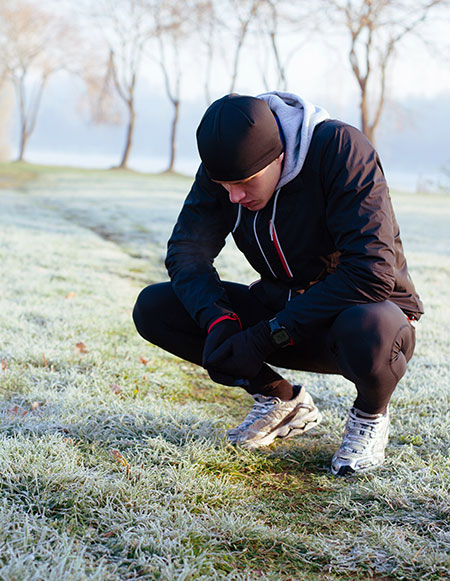
Exercising when you’re sick or injured can slow recovery and put you at risk for more health problems.
Sometimes it’s hard to know when an illness or injury is serious enough that you need to rest.
“Do a light workout if you have something you feel like you can work through and monitor yourself for symptoms indicating you need to stop,” said Genavieve Mirr, an athletic trainer.
Cold, flu and stomach viruses
Mild symptoms like a stuffy or runny nose or cough caused by postnasal drip shouldn’t stop you from working out.
Fever, chest congestion, fatigue, vomiting and diarrhea mean you should stay home. Besides putting you at risk for breathing problems, dehydration, dizziness and fainting, there’s a good chance you’ll spread your illness to teammates or other gym-goers.
Soreness, strains and sprains
“Muscle soreness is expected after a new or hard workout,” Mirr said.
Your muscles may ache when you get up from a chair or reach overhead after a hard workout, but soreness usually lasts only 24 hours. You can exercise again the next day.
Swelling, decreased range of motion, weakness and decreased ability to do daily activities are signs you need to rest. Exercising when you’re sick with these symptoms can cause more serious injuries.
Talk to your school’s athletic trainer or your primary care doctor if you have any of the symptoms mentioned above or pain that lasts more than 24 hours. He or she will evaluate you and explain how to treat the problem and how long you need to rest.
Return to exercise slowly
Five things should happen before you work out again after a sprain or strain:
- Clearance from your health care provider if you saw one.
- The area is no longer swollen.
- Range of motion and strength are equal on both sides of your body.
- Normal daily activities like walking and climbing stairs can be done without pain or limping.
- The injured area is stable again.
Follow the rule of halves when you return to exercise.
“Do half of what you think you can do,” Mirr said. “If you think you can run a mile, run half a mile. Do a bit more the next day if you feel good.”
Most people can easily return to regular exercise after a cold or stomach virus, but Mirr recommended taking it slow or choosing a less strenuous workout until you know you’ve recovered.






Leave a Reply